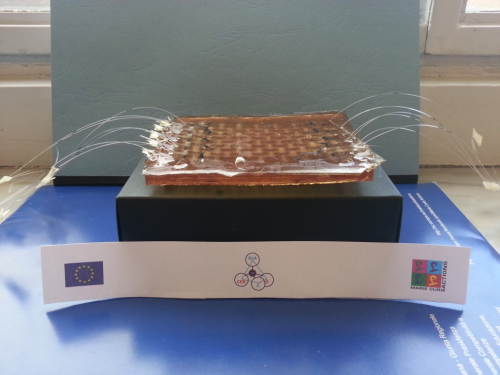
One of the topics covered in the project focussed on the development of simple, low cost optical sensors to provide non-destructive testing of chemical ageing in Glass Fibre Reinforced Polymers (GFRPs). This topic is of particular interest to the oil and gas industry due to the significant cost savings associated with switching from traditional steel components to GFRPs. The reasons for these savings are the lower production costs of GFRPs, due to lower material cost and component production. Additionally, savings can be made during the installation due to the weight saving and less technically demanding pipeline assembly process for GFRP compared to steel.
During this project, it was demonstrated that embedded glass fibre based evanescent sensors and Fibre Bragg gratings were able to detect the early stage of moisture diffusion into the GFRP polymer matrix after exposure to seawater at high temperature and pressure. There is also significant potential for the use of both sensors for the early detection of polymers degradation in other commercial applications. The glass fibre based evanescent sensor is a very low cost device that has the possibility to be modified to increase selectivity to a wide range of chemicals.
The project coordinators add that the availability of new, simple, and low cost photonic sensors for the hostile environments found in the oil and gas industry, has enormous economic potential for this strategically important industry for the EU.
In addition, the early detection of GFRP failure has a high impact on safety: these sensors can be used for other applications requiring the continuous structural monitoring, such as the aerospace industry or chemical storage facilities.
The idea came from a collaboration between Politecnico di Torino (DISAT and D.ET), Turin, Italy and Element Materials Technology, Hitchin, UK. The high temperature ageing was performed at Element, the fabrication of evanescent sensors, and all characterisation was done in Turin. The embedding of sensors was carried out at the Universitá degli Studi di Perugia, Terni, Italy.
The GlaCERCo Glass and Ceramic Composites for High Technology Applications project is a Marie Curie Initial training network that aims to offer multidisciplinary and inter-sectorial training in the field of high-tech glass and composite materials. The project covers a wide range of novel research topics, from glass sealants for fuel cells, to porous scaffolds for hard tissue replacement.



